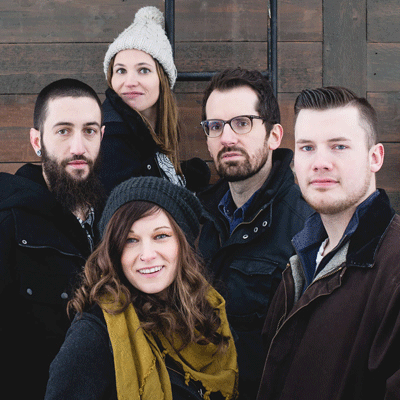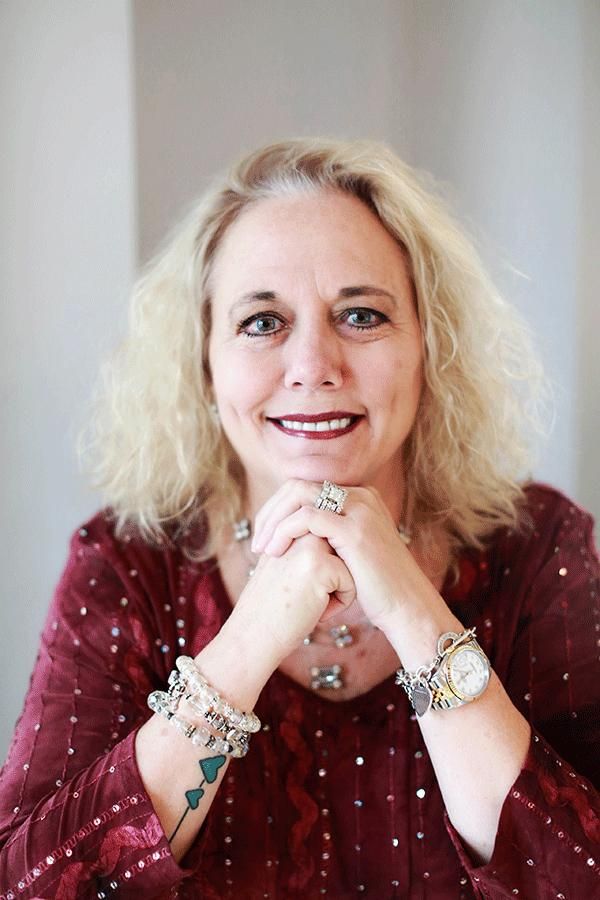When you first hear Belle & The Strange, you hear a lot coming at you. You hear the alt-country tinge of singer Lyndsy Porter’s voice, the beefy guitar riffs from her husband Ben Porter, Tyler Berggren’s deep, smooth bass lines, the essentially powerful drums of Colin Boyd and the unmistakably sweet sound of a violin being strung to life by Hope Royce. When all this comes together, you get an alt-country, blues-inspired, rock n’ roll spectacle. Belle & The Strange formed in 2015 after the Porters (now married, then dating) began writing music together when they met in 2012. At first their sound was a little folksier than it is now. Eventually it transformed into a heavier, smokier version of their folk-inspired rock music.
“Our sound is a mosaic of each member of the band. Hope’s melodic violin parts add colorful texture, and Tyler’s bass is both solid and inventive. Tyler was also instrumental in the recording process of our songs. We tracked the songs at our studio, which Tyler then mixed down. Colin is our magic weapon, our rhythm wizard. Lyndsy is convinced that there are 18 other drummers in the band, but every time she looks back, it’s just Colin,” said Ben Porter via email.
A lot of bands, especially in the hard-rock category, tend to start off about as heavy as they can get. After time and maturity, the sound usually adopts more melodic elements and eliminates some of the chaos. Adding deepening crescendos and slower tempos helps to show growth as musical acts progress, but some bands go the opposite way and become heavier as they age.
Recently, Belle & The Strange’s sound has gotten grittier. With more layers of distortion and frenzy, the songs begin to feel even more at home at a place like the Brass Rail, one of B&TS’s favorite venues. It’s not too heavy to fit in at most other bars, however; you wouldn’t find anyone walking out because the riffage was just too much. It’s heavy, but it’s appealing.
This maturing heaviness is hopefully something that can transcend genres and their respective crowds. Many people don’t dare touch anything with the word “country” attached, mostly due to the dreadful quality of “popular” modern country music. But the sound of country music, that twang that can leave you feeling heartbroken and hopeful all at once, is a now-timeless sound. It’s unfortunate that the majority of twang these days is exploited to sell stadium seats rather than be the voice for the lonely no matter where they lay their heads, rural or otherwise.
Along with Royce’s tight violin lines, perfectly accentuating the middle range of Ben Porter’s chunky guitar riffs, Lyndsy Porter’s voice is what takes the band to the country. Porter’s voice sounds as if she learned how to sing from some crazy dream-team scenario of Loretta Lynn and Joan Jett; the twang is ever-present in her sound, but she has a dirtiness, a rough-around-the-edges feel that brings her voice to life, up and above the rest.
“My mother was a country singer that moved us to Nashville to pursue her music career. I despised country music growing up, but fell into the trap of loving it,” said Lyndsy. “I’m not crazy about new country, but Emmylou Harris, Dolly Parton and LeAnne Rimes had a huge influence on my vocal training.”
This influence finds its place in shaky sustained notes and the upturn of the end of a word or line, but selectively as to make the sound mostly rock n’ roll. This keeps the band well out of the way of the country whirlpool.
The Porters and company are committed to making music as much for themselves as for their audience.
“We want the music-making process to be enjoyable and meaningful. Lyndsy spent a lot of time out on the road trying to make it big. After a year in a stinky van, she decided she wanted to make music for herself and not some invisible dangling carrot. Now that we have kids, creating music is more important than ever and in some ways more meaningful. It’s important to be a parent, but just as important to be yourself, to show them what self-respect and passion look like,” said Ben Porter.
This work ethic and passion definitely comes through in the band’s sound. The way the drums are hit by Boyd, chugging along as the backbone of the group, to the way the bass strings are plucked and plodded by Berggren’s fingers meeting Royce’s violin bow that glides across its sweet intention; it all lends itself to the blue-collar feel of country music, just not the sound of country overall.
This sum makes the band seem like relatable, working-class people. Not the lunch-pail-in-hand, punching-in-and-out working-class that made its way into Philip Levine poems, but the modern working-class where people are working to get ahead.
This is Belle & The Strange’s sound personified. Through every kick drum hit, every pluck of the violin, every bend of a guitar string, every thump of a bass string and every vocal slide, Belle & The Strange carve their way into the Fort Wayne rock n’ roll scene.


